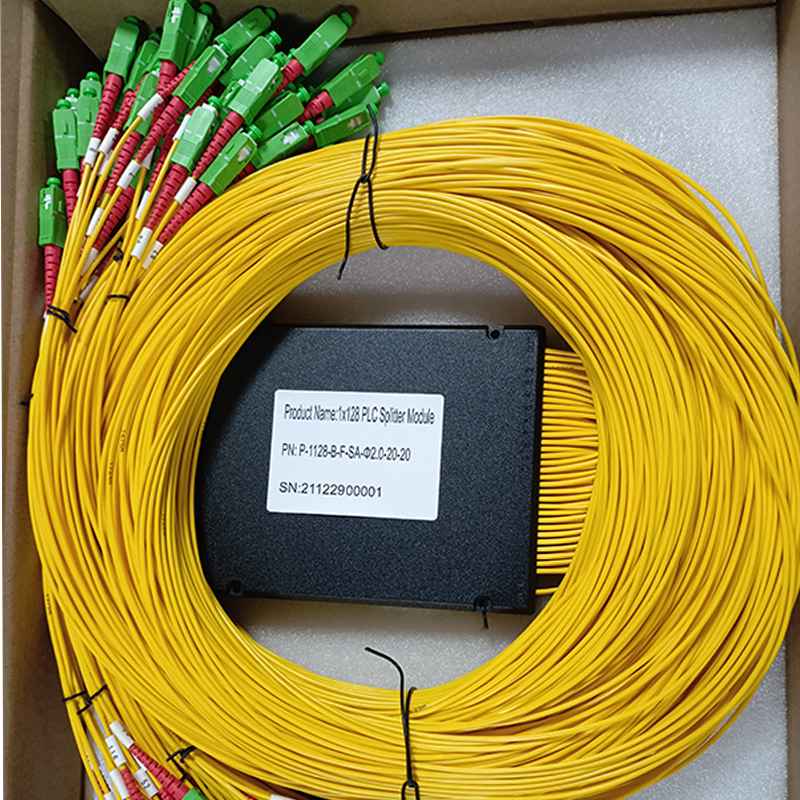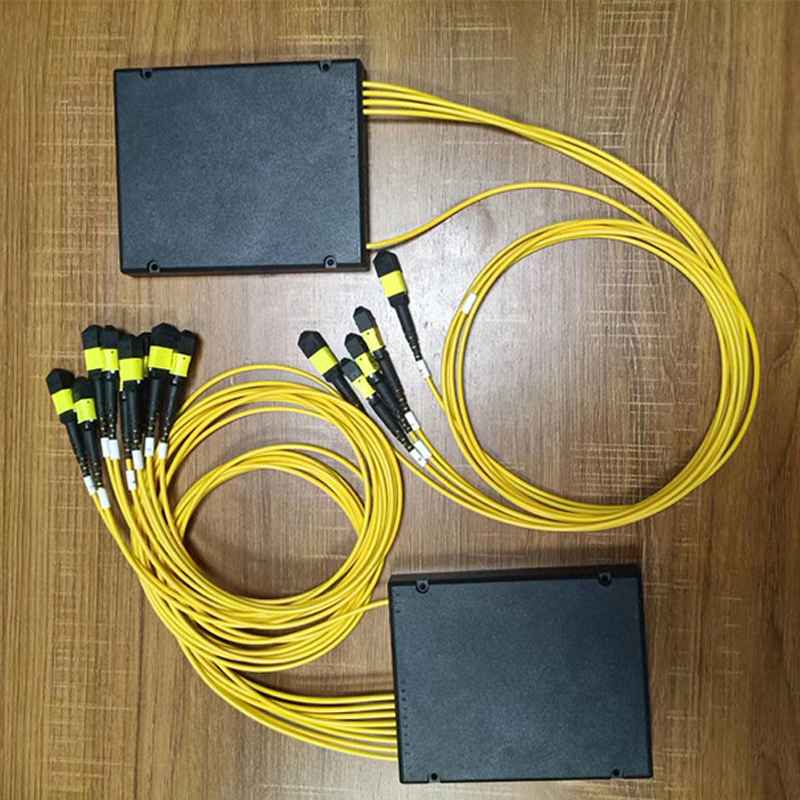Choosing a suitable optical fiber cable splitter requires comprehensive consideration of network requirements, environmental adaptability and technical parameters. The following is a key selection guide, hope it can help you in some way.
Optical Fibre Cable Splitter Core Selection Factors
Split ratio requirements
- Home and SMEs choose a 1:4 or 1:8 split ratio to meet basic equipment access.
- Data center and enterprise network prefer 1:32 or 1:64 high-density split ratio to support multi-terminal expansion.
- Non-uniform scenarios like security monitoring and other scenarios require customized split ratios (such as 70%:30%) to ensure bandwidth at key nodes.

Insertion loss and uniformity
PLC optical line splitter: low loss (about 10.7dB at 1:8), uniformity > 95%, suitable for high-precision scenarios (such as medical image transmission).
FBT optical splitter: low cost but poor uniformity, suitable for short-distance networks with splitting ratio ≤ 1:8.

Working wavelength compatibility
- Single-mode system: 1310nm/1550nm dual-wavelength splitter, suitable for PON network.
- Multimode system: 850nm/1310nm splitter, used for short-distance interconnection in computer rooms.

Optical Fiber Cable Splitter Selection By Environmental Adaptability
| Environmental scenarios | Compatible splitter types | Key parameters |
| Industrial workshop | Industrial-grade PLC splitter | Temperature resistance -40℃~85℃, anti-vibration design |
| Outdoor/underground | IP68 protective box package | Waterproof and dustproof, filled with waterproof glue |
| Sterile operating room | stainless steel sealed mini PLC splitter | Resistant to alcohol/hydrogen peroxide corrosion |
| High electromagnetic interference area | metal shielded FBT splitter | Suppresses interference from MRI and other equipment |
Extreme temperature scenarios: For northern regions, choose optical fiber cable splitter which can withstand -40°C .
Optical Fibre Cable Splitter Selection By Package and Interface
Package Type
- Mini plc splitter or LGX splitter are suitable for high-density cabinets in data centers.
- ABS cassette splitter is low cost and easy to maintain, suitable for building electrical shafts.
- Rack mount PLC splitter is compatible with standard 1U racks, simplifying management of large networks.

Interface Compatibility
- SC/LC Interface: Highly versatile, with a twist-lock lock to prevent disconnection.
- MPO/MTP Interface: High-density connectivity, suitable for 40G/100G modules.

Optical Fibre Cable Splitter Selection Steps
1. Determine the splitting ratio based on your application scenario. Options include 1xN, 2xN, and balanced splitter or unbalanced splitter.
2. Choose a different packaging method based on environmental requirements.
3. Select the manufacturing process based on bandwidth requirements. For bandwidths greater than 10G, choose a PLC splitter; otherwise, choose an FBT splitter.
4. Test insertion loss. If the loss test meets the requirements, approved. If it exceeds, use an OTDR to troubleshoot fiber quality and identify any issues.
5. For cost optimization: For short-distance, unevenly distributed scenarios, use FBT to save 30% of costs; for long-distance, high-precision scenarios, choose PLC to ensure stability.
Optical Fibre Cable Splitter FAQ
How to install and use a fiber splitter cable?
Fiber splitter cable is generally not used alone, but are pre-installed in some fiber optic splitter boxes, fiber optic cable junction boxes or wall-mounted terminal boxes. If the plc splitter without connectors, the fiber can be directly splicedd. If plc splitter with connectors, the corresponding fiber optic adapter can be directly inserted to open the optical link.
What brands of optical lead splitter are recommended?
Yingda is the best optical splitter manfuacturer from China, can offer separately or help assembly in fiber boxes and test for you. Read more in carticle: Top 10 Chinese Fiber Optic Splitter Manufacturer
What is the service life of a fiber optic splitter?
Theoretically, a fiber splitter cable can last over 20 years. If specially packaged and maintained under stringent environmental conditions, it can reach 25-30 years. However, improper use, maintenance, or environmental conditions can shorten its lifespan.

